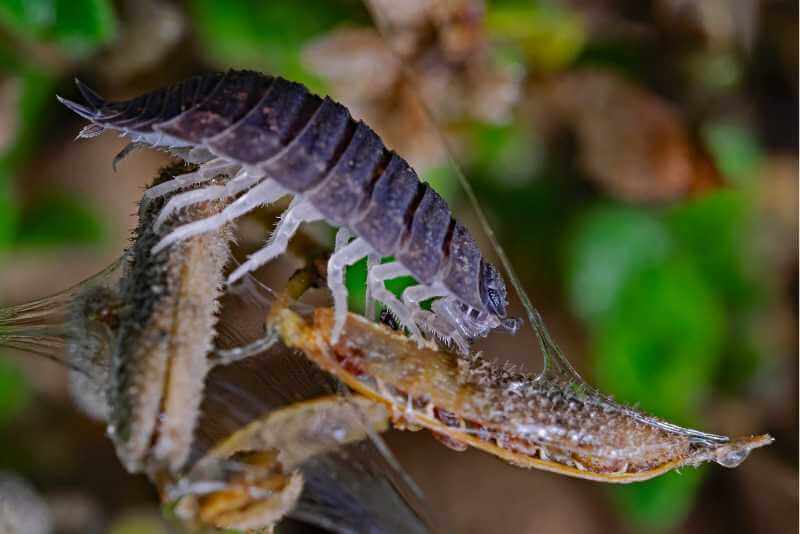Do Spiders Eat Woodlice? When it comes to a spider’s diet, you might think that it’s just as simple as scrounging for any food and eating whatever they can get their legs on in order to stay alive. However, the truth is much more complicated than that.
In fact, most people think spiders have a mostly insect-based diet, but spiders actually feed on a wide range of diverse meals! Depending on the type of spider, they consume plants, small animals, other spiders, and even fish!
But, what about tiny bugs like woodlice? Would a spider eat one? And most importantly, will it benefit them health-wise?
The short answer is yes, spiders do eat woodlice! In fact, there is one species in particular that primarily feeds on woodlice, and that’s the (Dysdera crocata) “woodlouse spider”.
Researchers actually performed a study on the woodlouse spider in 2003, and they found that woodlice make up 97% of this spider’s diet.
Are There Any Other Spiders That Eat Woodlice?
While the Woodlouse Spider (Dysdera crocata) is the most well-known spider species that specializes in hunting woodlice, other spiders have been known to eat woodlice.
However, these spiders don’t exclusively feed on woodlice as the Woodlouse Spider does. In fact, most spiders will avoid eating them if there’s plenty of prey to go around.
Does Woodlice Offer Any Nutritional Value To Spiders?
According to a study mentioned on NCBI, some spiders consider woodlice a poor prey due to their apparent low nutritional value. However, this doesn’t stop certain spiders from consuming them. The Woodlouse Spider is a good example of this!
While these sources don’t specify the exact nutritional content of woodlice, Edible Insects notes that insects, in general, are packed with animal protein, beneficial fats, vitamins, minerals, antioxidants, and prebiotic fiber.
Related Articles:

Can You Feed Spiders In Captivity Woodlice?
If you’re considering keeping a spider in captivity, it’s crucial to know what safe and nutritious foods they can eat. Avoid feeding spiders woodlice, as this is not recommended. In the wild, woodlice may be a common prey for spiders, but they can carry harmful parasites.
Moreover, woodlice lack the essential nutrients a spider needs to thrive. To ensure your spider’s well-being, stick to commercially available foods specifically formulated to meet their nutritional needs.
Alternatives To Woodlice
Numerous alternatives to woodlice can be used as food for captive creatures such as spiders, reptiles, and birds. Here are a few options:
- Crickets: These are a popular choice for many pet owners due to their high protein content and availability. They’re also easy to breed if you want to maintain a constant supply.
- Mealworms: These are another excellent source of protein and are particularly loved by reptiles and birds.
- Waxworms: These worms are high in fat, making them a good choice for adding variety to your pet’s diet or for fattening up underweight pets.
- Grasshoppers: are another excellent source of protein and are also a natural part of many spiders’ diets in the wild.
- Locusts: Mentioned in the search results as a popular live food option, locusts are nutritious and enjoyed by a variety of creatures.
- Fruit Flies: These tiny insects are ideal for smaller creatures or juvenile pets.
- Dubia Roaches: These are becoming increasingly popular due to their high protein content and the ease of breeding them at home.
When feeding your spider always remember, to provide a varied diet to ensure your pet is receiving all the nutrients they need.
Conclusion
So while woodlice are a specific dietary choice for certain spiders, they may not be the most nutritionally rich option for other spiders, especially those in captivity.
In the end, always stick to what you know. If you are unsure or worried about your spider’s health, feed it prey that is high in proteins mentioned in the list above.



